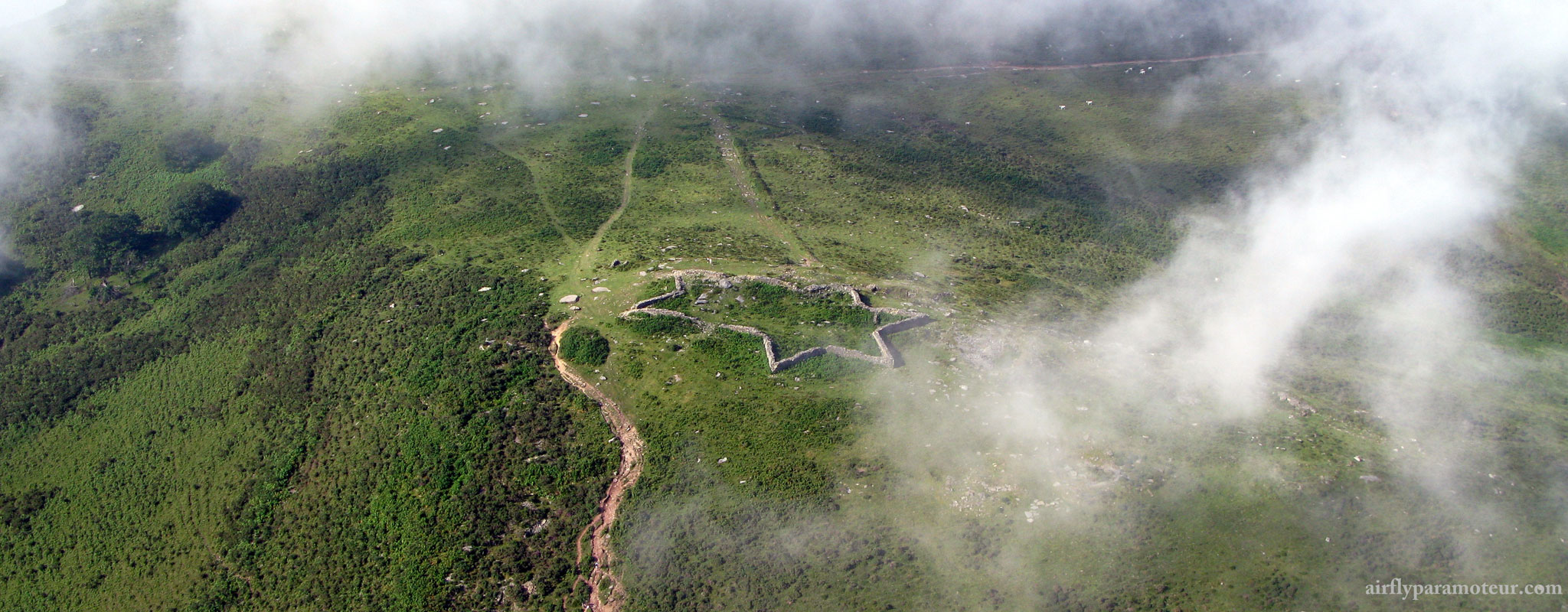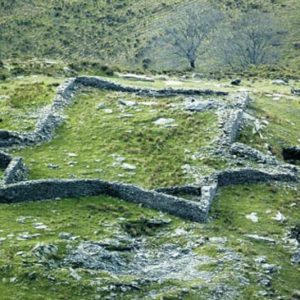In front of you, above the train tracks and just behind the peak, you can see dry stone walls; these are the vestiges of a Napoleonic redoute which dates back to Napoléon I, specifically the La Rhune combats in 1813. The fortified site of Koralhandia is the most remarkable in Basque Country.
Listen to the soundtrack :
A redoute is an ancient fortification where soldiers hid during battles. It was a strategic, defensive fort built in the shape of a star with six branches.
History
After the French defeat in Vitoria on June 21, 1813, troops gathered under the command of the English commander, General Wellington, who penetrated France in the attack of October 7, 1813.
At around 4:00 AM they attempted an attack on La Rhune at a strategic point within Basque Country but this did not succeed. The general then decided to bypass the mountain and took advanced positions in Sare. Fearing encirclement, the French left La Rhune at 8:00 PM in and retreated to the Koralhandia fort (the large enclosure in Basque) and the Alchange peak, just below the summit.
La Rhune was finally occupied by the Allies. on November 10, 40,000 English, Portuguese and Spanish were in position to attack a small army of 15,000 French soldiers.
There had been a heavy snowfall earlier that month and the attack took place with the return of the Southern wind known as “Saint-Martin’s summer”.
The French position was attacked at night on November 9 and 10, 1813 by the 43rd allied regiment (Kempf Brigade of the Alten Division) from Three Fountains and by the 17th Portuguese Regiment (Colborne). It was also attacked by the Spaniards of Longa and Giron from Argaineko Pass. The Mouiz star was defended by General Maransin.
Furious combats took place during this battle and the French soldiers defended themselves to the very end, even using stones and rocks in an attempt to hold off the Allies who, by 8:00 AM, had taken the Mouiz fort and by 2:00 PM, the English troops were occupying Saint-Pée-sur-Nivelle.


